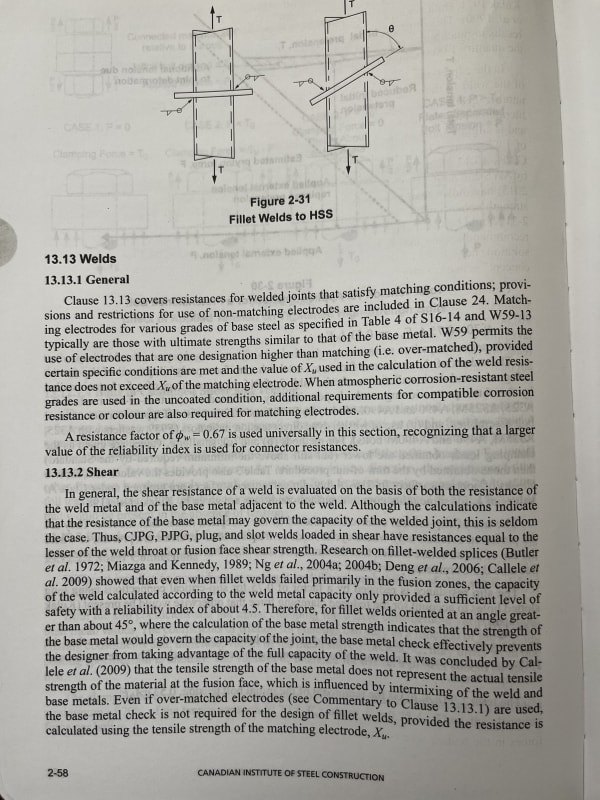Hey all,
Steel supplier is insisting on using A53 Gr. B, with a yield strength of 240MPa, but the baseplate we are welding to has a yield strength of 300MPa. In the weld tables of HSC CSA16-14 (Blue book) there is no listing for 240MPa yield strength base material, and it appears that it wouldn't use matching electrodes anyways.
What is the correct procedure when welding materials that don't share a matching electrode as far as sizing the weld. Is it as simple as using the smaller electrode capacity to be conservative, and then the W59 qualified welder will worry about how it is welded?
I saw this thread which seems to use E49xx (Canadian equivalent to E70xx) even though the matching electrodes conditions table doesn't list A53.
Steel supplier is insisting on using A53 Gr. B, with a yield strength of 240MPa, but the baseplate we are welding to has a yield strength of 300MPa. In the weld tables of HSC CSA16-14 (Blue book) there is no listing for 240MPa yield strength base material, and it appears that it wouldn't use matching electrodes anyways.
What is the correct procedure when welding materials that don't share a matching electrode as far as sizing the weld. Is it as simple as using the smaller electrode capacity to be conservative, and then the W59 qualified welder will worry about how it is welded?
I saw this thread which seems to use E49xx (Canadian equivalent to E70xx) even though the matching electrodes conditions table doesn't list A53.

